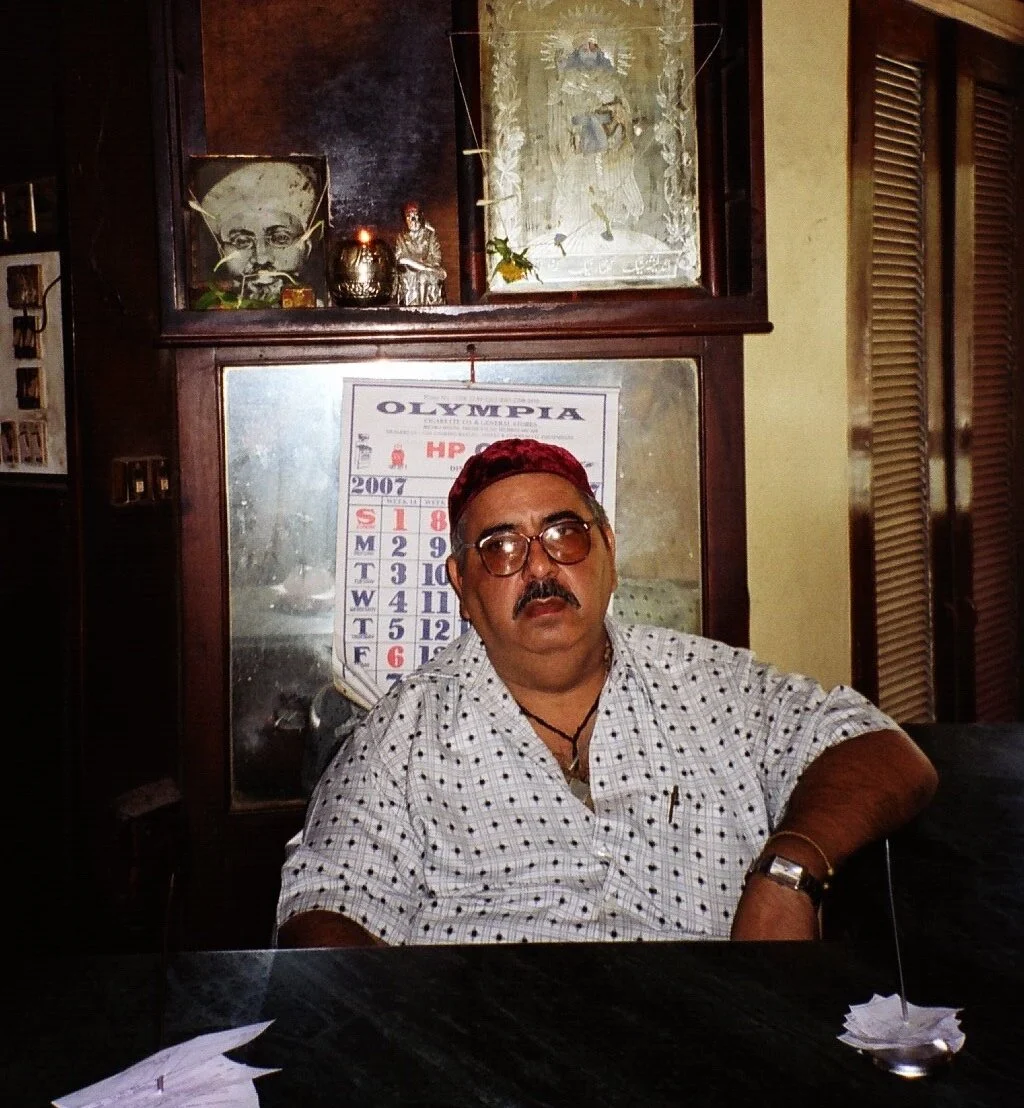Sassanian Bakery and Restaurant
{Marine Lines, Est. 1913}
As I take care of my wife, I take care of my place also. I love this place, this place is just like a temple to me.
-Meheraban Kola, April 2007
_________________________________
My father was from a village called Arestan. In Iran. My mother was also from Arestan. My fathers father was an agriculturist…he used to grow fruits and other things – pomegranate, apples. My father arrived in Bombay in 1920. After the death of his mother, uh, he was sent to Bombay by father and then he started working in a restaurant.
First he worked in Goodman Restaurant which was an original Persian bakery which later on closed down and now there is a footwear shop over there. After that my father worked at Kyani, he started over there as a waiter, then he became a cashier over there, he has worked as a baker also over there; until 1945 he was working over there.
In 1947 he took up Sasanian which was started in 1913 by the Yazdabadi family, Mr Rustom K. Yazdabadi. He was the one who started Sasanian and I think so, but not sure, ahhh, in the end of the 1800s, Kyani had come up and that was started by his elder brother, Yazdabadi’s elder brother. And at first there was Kyani restaurant at the corner, then there was Brabourne Restaurant, which is still there, and in this lane, Second Marine Street, there was a Café Wellington which was an Irani restaurant in the late 1800s. This was, I think, the first Irani in Mumbai. It is not an Irani restaurant now.
They used to say “Bombay toh sonapur hai”– many people used to come from Iran for prosperity. They used to come on donkey’s back from Iran, half the way they used to come on donkey’s back*.
The high time of the Irani cafes were I think during the British rule. There were a lot of Irani cafes and at that time, even after that, still Udipi restaurants didn’t come (yet) to Mumbai. Irani restaurants were there, and the main reason Irani restaurants were on the corner of every street, and why the Irani restaurants were prosperous I can say, you see, an Irani restaurant, once it opened at 5 in the morning, it had the newspapers, people could read, papers used to come at that time, by 430, quarter to 5, and you could feel the warmness of the paper, that it had come directly from the press.
Another thing is, each and every Irani restaurant, though it gave tea, bun maska, omelette and some also had food a little bit, they had other necessities of life which people wanted - toothpaste, soap, hair oil, all the necessities, needs, even envelopes were kept. Even cigarettes were kept. Just like a small convenience store.
In the beginning, there was no food here, only bun maska, chai and omelette. Eating habits have changed in the city because, see, people are … every people has a want to change, they do not want to eat bread and butter every day , they want idli sambar, and to try other things, Chinese and all that. So after Irani cafes then (came) Udipi places, ahhh in 1990s Chinese food became popular, all these different foods started coming and all have stayed. But still people love Irani tea. And they love to come and eat bun maska, chai, some of the modern generation they love to come over here. In 2000 we changed the menu, and started serving Parsi and continental dishes. Our dhansak is probably the most dish.
See basically the principle of me and my dad is whatever you serve should be good, and should be value for money. Because in an Irani restaurant a poor person comes, a rich person comes, a middle class person comes. As I take care of my wife, I take care of my place also. I love this place, this place is just like a temple to me, where I serve people, and I would like to see my each and every customer happy with what they have eaten.
And one more thing. The fire in the bakery here has never stopped since 1913. Though the bakery was once repaired, still we kept the fire, as we Zoroastrians worship with fire, I think my success is due to that also. Because we believe (in fire) and that has helped us to prosper.
__
From an interview with Meheraban Khodadad Kola Dhobi Talao, Mumbai, April 2007
* Bombay toh sonapur hai - Bombay is the city of gold


ca. 1970

2007

ca 1940

ca 1986

2020

2020

2020

ca 1940
_____________________________________
IMAGES: top to bottom:
MEHERABAN (AKA MERWAN) KHODADAD KOLLA, Bombay, ca. 1970, courtesy Meheraban Kolla
MEHERABAN KHODADAD KOLLA, SASSANIAN, Marine Lines, 2007
K.R. SASANIAN advertisement, ca. 1940
SASSANIAN, Marine Lines, ca. 1986, photographer namas Bhojani, COPYRIGHT Namas Bhojani
MEHERABAN KOLLA AND DILNAZ SANJAN, SASSANIAN, 2020, photographer Bruce Carter, copyright Bruce Carter
SASSANIAN, Marine Lines, 2020
SASSANIAN, Marine Lines, 2020, photographer Anushka Gupta, copyright Anushka Gupta
K.R. SASANIAN, advertisement ca. 1940

